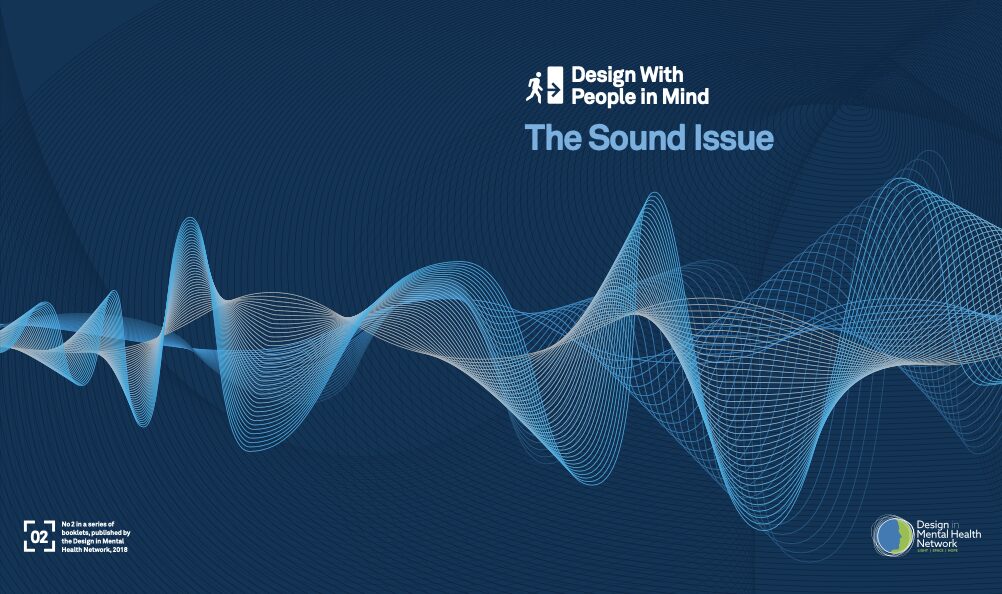Research and
Education
Evidencing and Spreading Best Practices
We know that good design, grounded in evidence and lived experience, can transform mental health environments and improve outcomes for those who use and deliver care. We are proud to provide evidence-based resources to enable you to shape better mental health environments.
Our Research and Education Focus
Our work in research and education is built on years of academic and practical collaboration. Led by experts such as Professor Paula Reavey and Professor Steven Brown, DiMHN has become a trusted authority in evidencing best practice for the mental health built environment.
Design with People in Mind: Groundbreaking Publications
The Design with People in Mind series is a cornerstone of our research and education offering. With nine books published to date, this series translates research into accessible insights for those seeking to make evidence-based changes and improve outcomes in mental health settings.
The series offers:
- Evidence-based recommendations
- Practical insights for real-world application
- Case studies from across the globe
- Actionable takeaways that can be applied to your own projects.
“DIMHN gives me the opportunity to learn, share, challenge, and develop my understanding of the constraints and opportunities presented by Mental Health design. Uniquely, DIMHN has created an ecosystem of clinicians, designers, service users, manufacturers and constructors, and a platform to allow parallel and contemporaneous thinking in the development of healthier, people-centric approaches to be shared for the benefit of all.”
– Stuart McArthur, Healthcare Sector Leader, Sir Robert McAlpine Ltd
As a DiMHN member, you gain exclusive access to these resources, available in both digital and printed formats, at our annual conferences. These books provide an invaluable resource for anyone interested in research-informed design in mental health.
The Design with People in Mind series is a comprehensive collection of research publications provided to help you create better mental health environments.
Below is the full list of ten books currently available to members:
Design with People in Mind - Issue 1
This publication goes beyond defining ‘good design’—it explores how people interact with mental health environments and how design shapes feelings, behaviours, and relationships. Rooted in lived experience and academic evidence, it highlights how thoughtful, therapeutic design can support healing and well-being.
The booklet provides a concise overview of research across various disciplines, including psychology, architecture, and psychiatry, with a focus on inpatient settings. It aims to support designers, practitioners, and decision-makers by presenting complex evidence in a clear and accessible way. A more comprehensive review covering wider environments will follow and is available to DiMHN members.
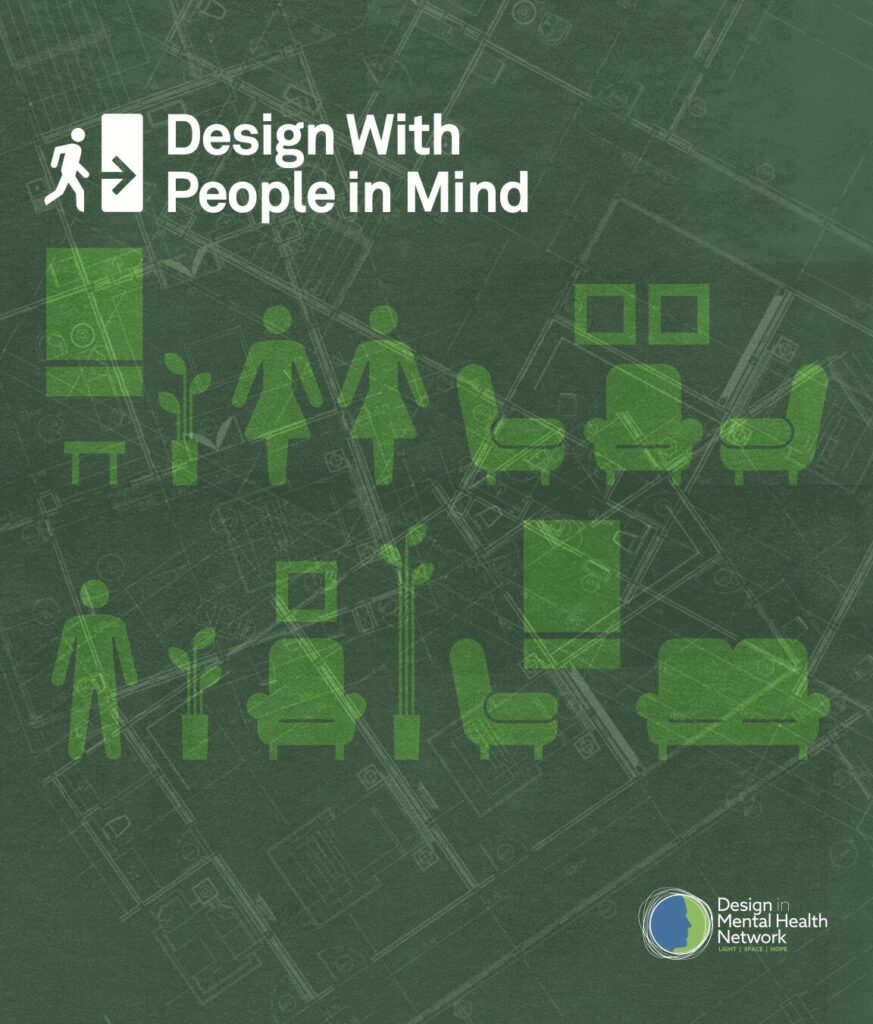
2. The Sound Issue - Design With Sound In Mind
The second book in the “Design with People in Mind” series explores the critical yet often overlooked role of sound in mental health environments. Responding to demand, this edition examines how acoustic design influences stress, behaviour, sleep, aggression, and overall well-being.
Drawing on multidisciplinary evidence, it demonstrates how poor sound environments can exacerbate distress, while thoughtful acoustic choices, especially natural sounds, can promote calmness, connection, and recovery. The publication encourages designers and decision-makers to treat sound not as an afterthought, but as a therapeutic tool.
By linking research from psychology, psychiatry, design, nursing, and lived experience, the book offers practical insights for creating environments that truly support mental health through sound.
3. Design With People in Mind - The Stakeholder Engagement Toolkit
The Stakeholder Engagement Toolkit supports healthcare providers, particularly the NHS, private and VCSE providers in planning and delivering meaningful, consistent stakeholder engagement throughout mental health design projects.
It provides a structured, step-by-step approach using practical tools, such as workshops, site visits, and collaborative meetings. The toolkit emphasises early and continuous engagement, ensuring stakeholders, including service users, carers, clinicians, estates teams and the wider community, are involved in shaping environments that reflect real needs and promote recovery.
Key principles include:
- Co-production, not consultation
- Making designs understandable and open to feedback (e.g., avoiding “flat” technical drawings)
- Maintaining continuity among stakeholder reps
- Capturing feedback and ensuring clear governance
- Reimbursing service users and carers for their contributions
Designed to be flexible and evolving, the toolkit champions better, more inclusive mental health environments by placing people and lived experience at the centre of design decisions.
4. The Nature Issue - Design with Nature In Mind
This fourth volume examines the crucial role of nature in promoting mental health recovery. Drawing on historical and current evidence, it highlights how access to natural environments, even in small ways, can reduce stress, aggression, and distress while enhancing well-being and safety.
The booklet advocates for biophilic design, demonstrating how sensory engagement with nature (through light, sound, and texture) and active experiences, such as gardening or walking, can foster connection, vitality, and therapeutic benefits.
It calls for a reimagining of mental health environments, not just as places of treatment, but as spaces that nurture the whole person through thoughtful integration of the natural world.
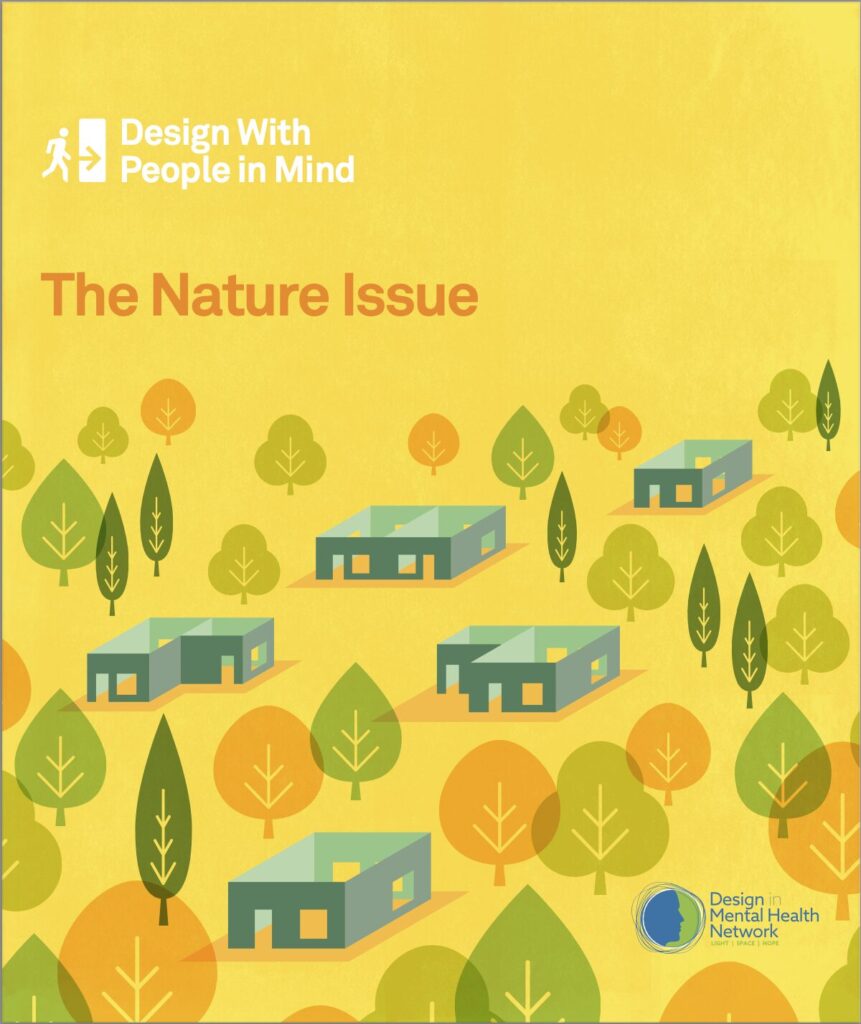
5. Informed Choices - Testing Guidance for Products in Mental Health Facilities
This book introduces the Informed Choices testing framework, a graded certification system developed by DiMHN and BRE to assess the ligature resistance, robustness, and anti-barricade performance of products used in mental health environments.
This independent and repeatable process gives clinicians, designers, and specifiers the evidence they need to make safer, better-informed product decisions—balancing clinical risk, usability, and therapeutic quality.
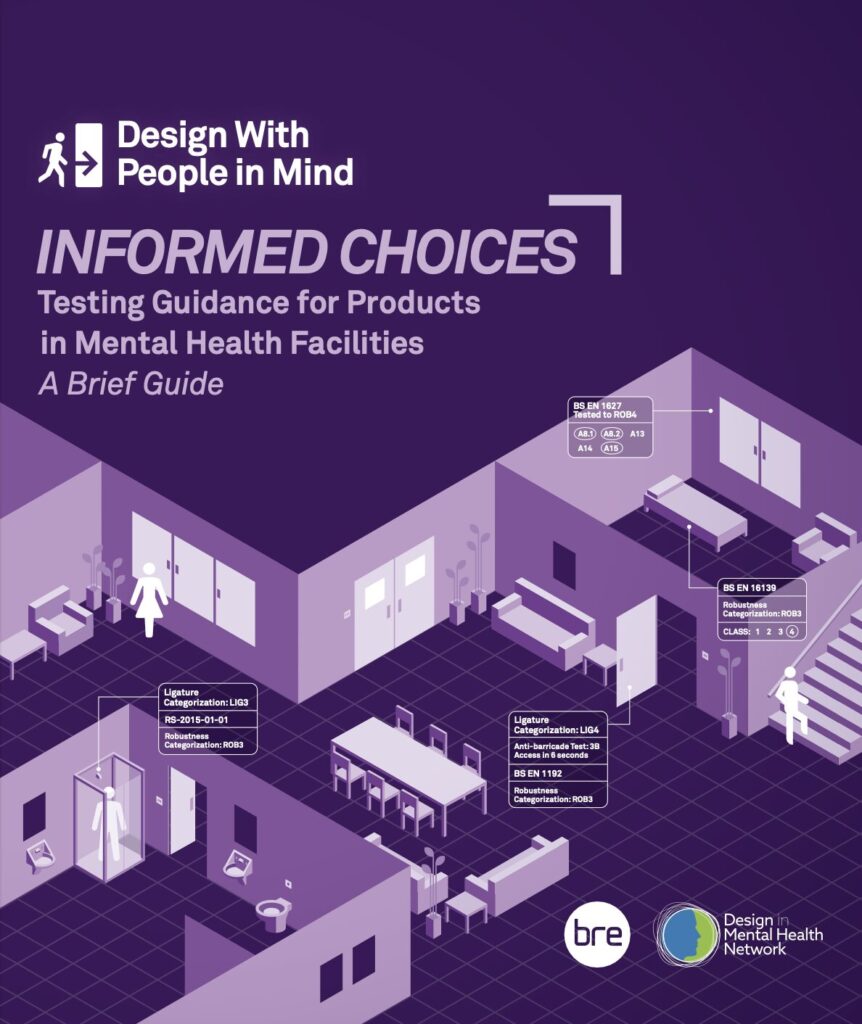
6. Design with Borders & Boundaries in Mind
The sixth volume explores how borders and boundaries, both physical and psychological, shape mental health environments. It examines how space is divided to balance privacy, dignity, observation, and safety, drawing on evidence, lived experience, and clinical insight.
Informed by the COVID-19 pandemic’s impact on personal space and blurred boundaries, the publication highlights the importance of thoughtful design in fostering recovery and well-being.
It encourages us to reimagine how boundaries can support therapeutic relationships and a sense of belonging.
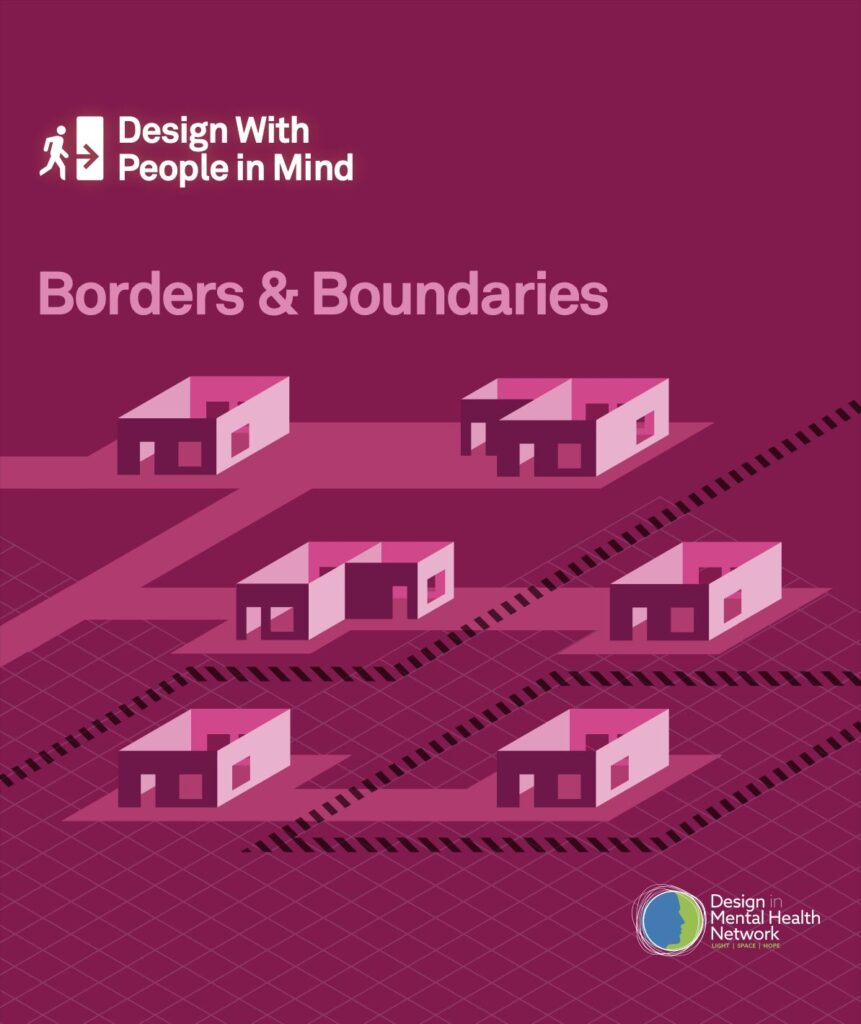
7. The International Issue - International Perspectives on Design with People in Mind
This seventh volume examines the design of mental health care environments worldwide, providing international perspectives through a Rapid Evidence Assessment (REA).
It identifies common challenges, such as balancing safety with autonomy, and highlights diverse approaches, ranging from person-centred hospital design in Sweden to Brazil’s community-based psychosocial care.
By examining global themes and case studies from countries such as China, South Africa, and Japan, the booklet broadens the conversation beyond the UK, reaffirming the central importance of service-user voices in shaping therapeutic spaces.
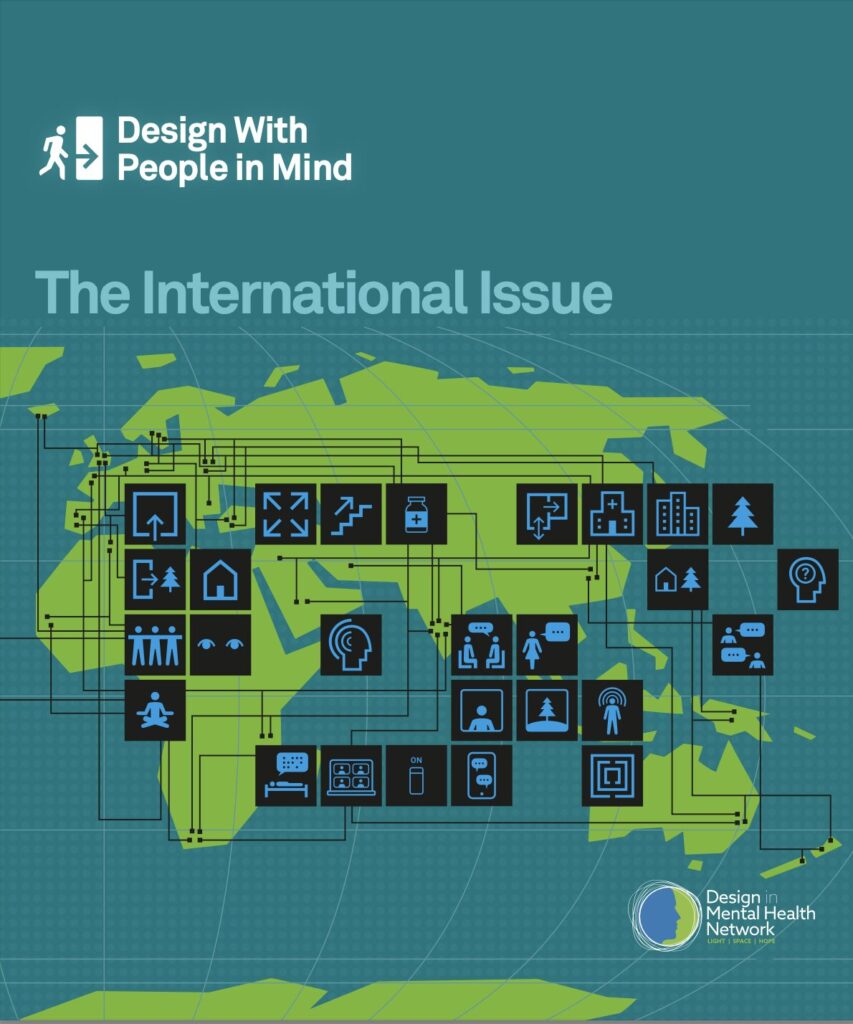
8. The Seclusion Issue - Design with Seclusion In Mind
The eighth volume explores the complex issue of seclusion in mental health care, spaces meant for safety and calm, but too often experienced as isolating and traumatic.
Drawing on research, lived experience, and clinical perspectives, the publication critiques current design practices and highlights the need for trauma-informed, dignity-focused alternatives.
It examines how seclusion impacts recovery, relationships, and emotional well-being, and considers more therapeutic approaches, such as sensory rooms and adaptable environments that offer patients choice.
The book advocates for a reconsideration of seclusion design, grounded in compassion and evidence.
Focused on the concept of recovery-oriented design, this book offers research-based solutions that help create supportive environments that promote mental and emotional recovery.
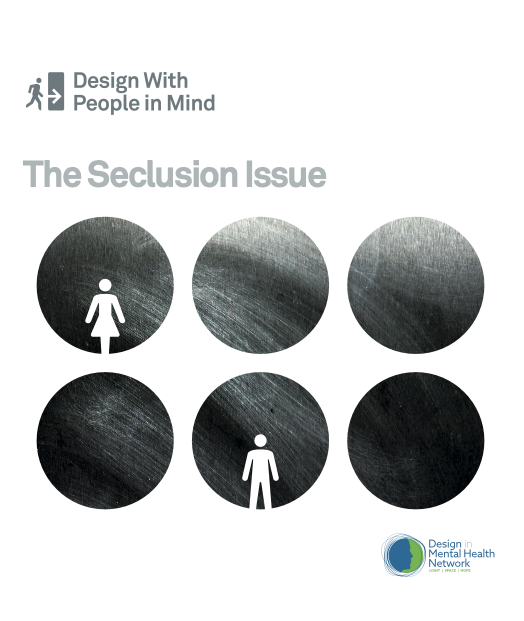
9. The Art Issue - Design with Art in Mind
This volume examines how art in mental health environments transcends mere decoration, playing a vital role in fostering identity, connection, and a sense of belonging.
It argues that therapeutic spaces should convey value, creativity, and hospitality, rather than sterility or isolation.
Drawing on emerging global initiatives, such as the WHO-backed Jameel Arts & Health Lab, the publication highlights growing evidence linking art to improved mental health outcomes, particularly in underserved communities. It calls for art to be integrated into care settings as a powerful, evidence-informed tool for healing and inclusion.
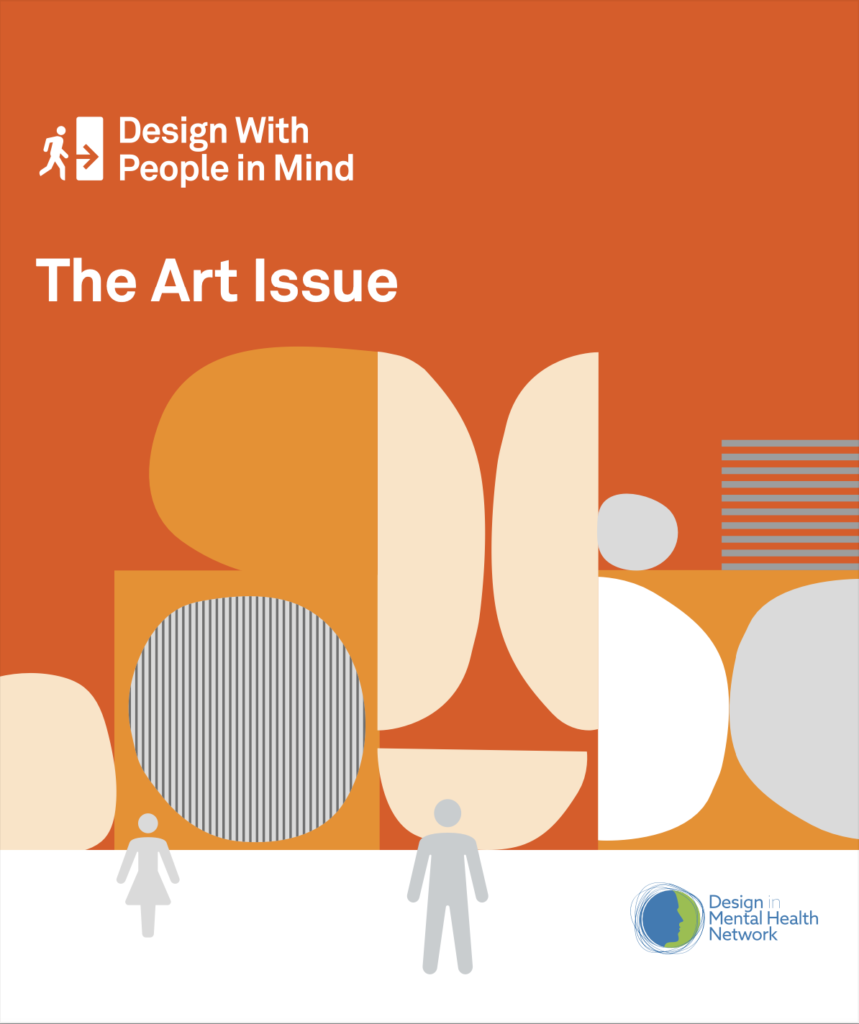
10. Design with People In Mind - The Key Evidence
New for 2025, and launched at the Design In Mental Health 2025 Conference, Design with People in Mind: The Key Evidence is the first publication to systematically review what independent research tells us works in inpatient mental health design.
It identifies eight essential design features that support both service users and staff, providing a practical, evidence-based guide for creating better environments.
The book explores key ingredients of therapeutic design, co-design principles, service-specific considerations, and real-world case studies, making it a vital resource for anyone shaping mental health spaces.
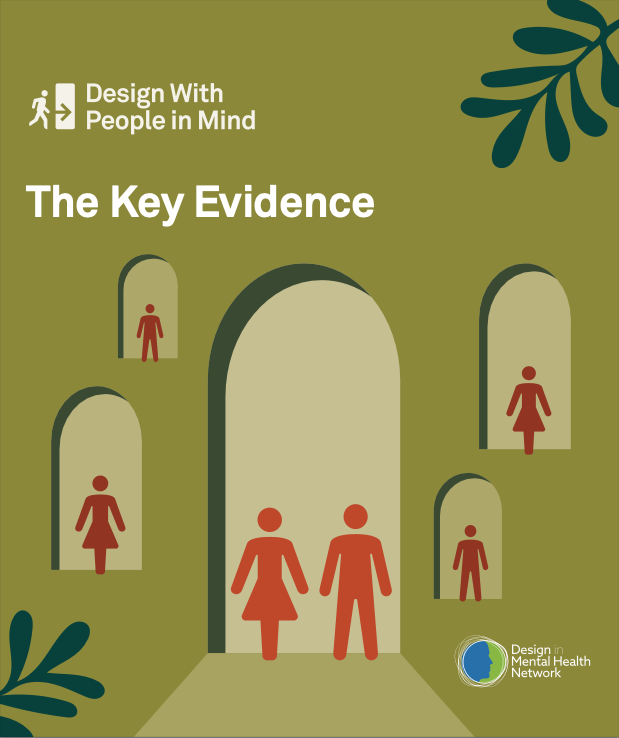
The Network: Quarterly Magazine for Members
Our quarterly magazine, The Network, is another key resource for staying up-to-date with the latest real-world evidence, industry trends, and sector developments. The Magazine is packed with:
Interviews with experts and thought leaders
Case studies of innovative mental health facilities
Research highlights and emerging best practices
Updates on DiMHN events and member achievements
Whether you’re designing new spaces or enhancing existing ones, The Network offers a deeper understanding of the challenges, solutions, and innovations that are shaping the future of mental health environments.
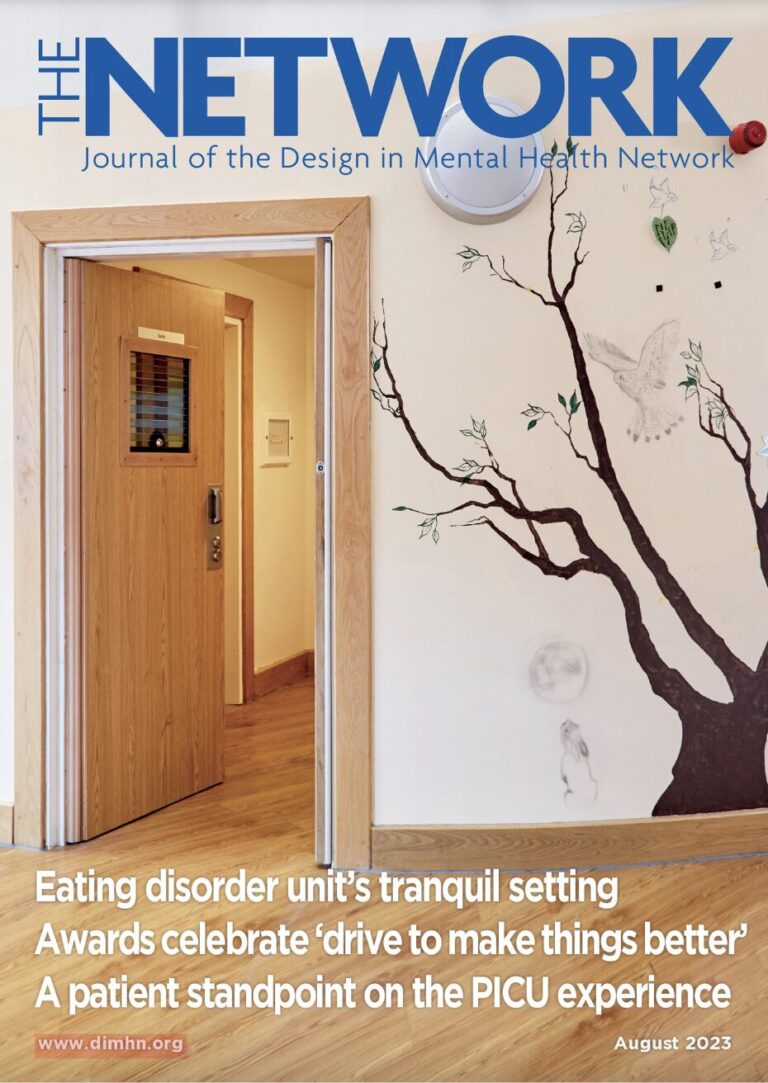
Research Objectives: Advancing Knowledge, Shaping the Future
Our research goals are aimed at providing you with the tools and knowledge needed to drive continuous improvement.
Design in Mental Health Network’s current research activities focus on:
- Developing a comprehensive, up-to-date research repository containing empirical studies on all aspects of design in mental health, ensuring that members have access to the latest evidence.
- Reviewing global research to provide insights into the interconnectedness of design, the built environment, and mental health care, highlighting the most impactful findings.
- Collating and sharing patient and staff experiences to understand better how design choices impact those who use and work in mental health environments.
- Identifying research gaps, focusing on areas where further research could support the development of better design solutions.
- Producing easy-to-access research summaries delivered at our annual conference and available online, summarising key findings and providing actionable insights.
Collaborative Learning & Outreach

At DiMHN, we believe in the power of collaborative learning. We host events where members can come together to discuss current research, exchange ideas, and learn from one another.
In addition to our annual partner conferences, we continually gather feedback from our members to ensure that our research and educational resources meet your needs.
Surveys, consultations, and feedback loops enable us to evolve and adapt, ensuring that we continue to provide relevant and impactful content.
Become a Member and Access Research, Education, and Real-World Evidence
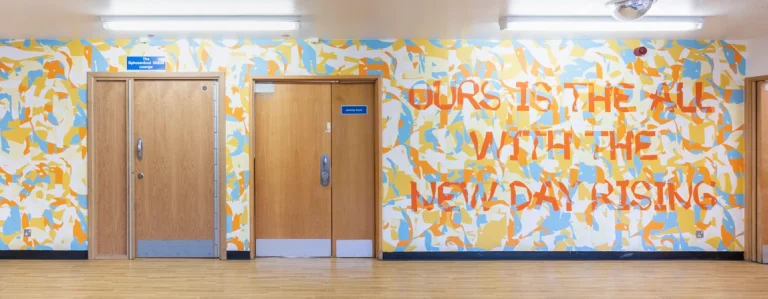
By joining the Design in Mental Health Network, you’ll gain access to valuable research and resources, and you’ll become part of a community committed to improving mental health environments.
Corporate membership provides year-round access to:
- Exclusive research publications and downloads
- Discounted access to our annual conferences
- Quarterly issues of The Network magazine
- Opportunities to connect and collaborate with a cross-sector community of industry leaders, lived experience experts, designers, researchers, working together to shape more inclusive, evidence-based mental health environments.


